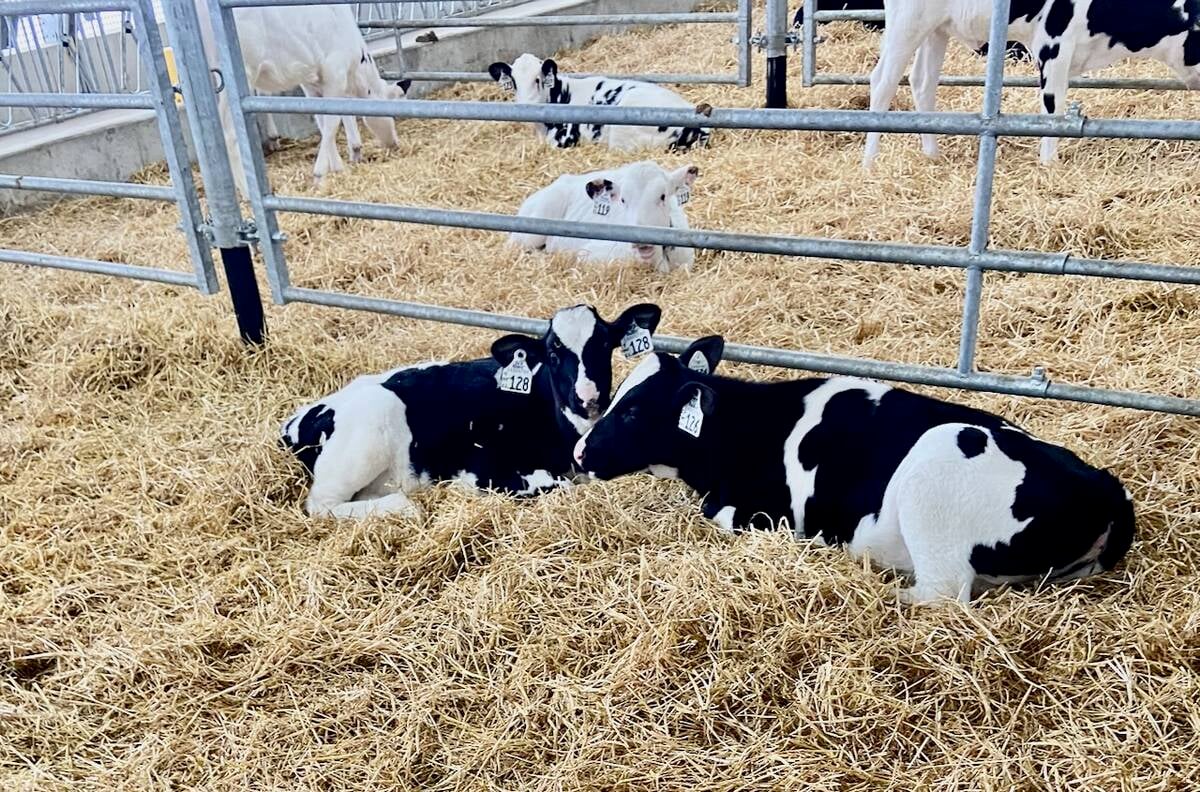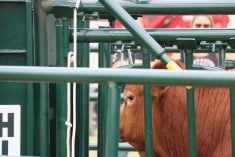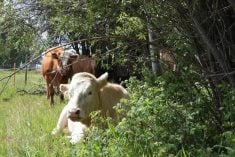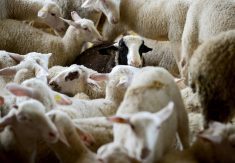The recent foot-and-mouth disease outbreak in Germany tells us that we all collectively need to be on the lookout for it.
In Canada, the Beef Cattle Research Council has been the real centre for compiling information, putting out brochures and posters illustrating the clinical signs and organizing webinars and videos for veterinarians and producers. These should be of interest to the general public as well.
We all know that FMD is an extremely contagious viral disease affecting all cloven hoof animals, which includes wildlife species such as elk or deer as well as all farm production animals.
Read Also

Dairy calves need more colostrum
Canadian dairy researchers suggest feeding colostrum closer to 300 grams of immunoglobin G (IgC) in a calf’s first 12 hours.
Horses can get a disease called vesicular stomatitis that resembles FMD.
Where are the foot and mouth disease outbreaks?
Producers and the general public need to be aware of several things.
One is where outbreaks are happening in the world.
The other is that the most likely transmission route is travellers bringing the disease back into Canada from abroad, either on themselves or contaminated meat.
Even tighter border security and the use of more sniffer dogs for meat are a great preventive step.
These days, this step would also help prevent the introduction of African swine fever into the country.
The list of countries with FMD outbreaks is ever changing, but hopefully the media can keep us up to date.
Generally speaking, most of Africa and much of Asia and the Middle East are endemic for the disease. Countries such as Turkey and now Germany have had outbreaks in recent years.
The World Organization for Animal Health has a great site showing where FMD exists.
It is pretty scary to think that the disease is only an air flight away under the right circumstances.

Prevention is always the best remedy, which it is important to ask questions at the border such as whether travelers were on a farm while abroad and if they plan to travel to a farm after they arrive back in Canada.
Tourists visiting mountain parks is an example of where wildlife could become infected.
I believe stricter protocols with disinfection might be necessary, depending on where travellers are coming from. For example, a farm worker coming from Africa or Germany might require quarantine or at least strict scrutiny.
Producers should be very aware of where visitors to their farms are coming from and the FMD and ASF status of their home countries.
When a country reports an outbreak, it results in an immediate cessation of meat exports from that country.
Biosecurity key against foot and mouth disease
Diligence about biosecurity not only helps prevent FMD and ASF but all transmissible diseases that affect animals and humans.
We all saw how biosecurity could be increased during the COVID-19 pandemic, but that is now a somewhat distant memory and we have all gone back to old habits.
FMD has been called the Greatest Economic Threat and the most important transboundary animal disease in the world.
I have heard that it can spread over land up to 60 kilometres and over oceans up to 300 km. Those are scary numbers, and even though they are extreme, we need to remain vigilant.
The sign-in register for visitors to ours farm is where we as individuals fall short.
This is especially true on purebred operations, which could employ foreign workers or host visitors from abroad.
Self-isolation in some cases may be the most appropriate thing to do.
Identifying foot and mouth disease
It’s also important to know how to identify the disease if it shows up on your farm.
Signs include several animals that are drooling or lame with initial blister-type lesions that soon rupture and be an open wound before clearing up in a few days.
This is where a diligent producer can recognize something abnormal and call in a veterinarian, who can then notify the Canadian Food Inspection Agency. This will start the investigative process.
If FMD is ever found in Canada, hopefully we’ll get lucky like they were in Germany, where the farm was relatively isolated and the disease pretty much contained.
FMD symptoms do resemble vesicular stomatitis and bluetongue, which is what they were ruling out in Germany. It also resemble more common diseases with oral erosions, such as BVD and IBR.
Foot and mouth versus hand, foot and mouth
An important thing to remember is that FMD in animals is not the same as hand, foot and mouth disease that children can commonly get from other kids.
This is a huge title misnomer that the average urbanite needs to understand.
Heavier fines and/or people being turned back at the border when unlawful products are brought in are likely necessary to stress the seriousness of the situation.
They always say it is not if we get FMD, but when. I would highly hope we can prevent entry, and if it does enter, that diligent producers and veterinarians recognize it right away.
This is for the sake of the entire cattle industry but also hogs, sheep, goats and our cloven hoofed wildlife.
We all need to work together on this one.
















